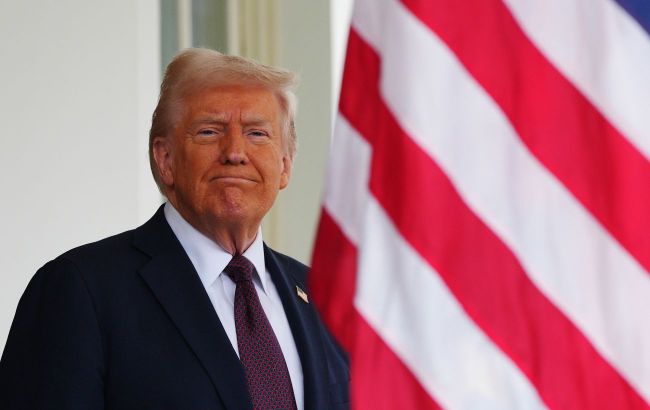Trump's historic tariffs begin: What’s at stake for world economy
 Photo: US President Donald Trump (Getty Images)
Photo: US President Donald Trump (Getty Images)
US President Donald Trump has imposed a historic wave of new tariffs on imports from dozens of countries, significantly exacerbating global trade tensions. Even US partners have been hit, CNN reports.
President Donald Trump has imposed a new wave of tariffs on dozens of America's trading partners, marking a significant escalation in trade tensions that could be the biggest change in the global economy in nearly a century.
The historic new trade policy came after months of failed attempts by Trump to impose so-called reciprocal tariffs and countless bilateral trade negotiations.
Some of these did indeed lead to agreements that prevented higher tariffs.
Now, the US president is pushing for new, much more aggressive tariffs, which economists say could exacerbate emerging economic problems, including rising inflation and slowing job growth, which are becoming increasingly apparent.
What has changed in US tariffs
Until today, August 7, goods from virtually every country were subject to a minimum 10% tariff. Now, however, rates vary significantly from country to country.
The highest rates apply to goods from:
- Brazil (50%),
- Laos (40%),
- Myanmar (40%),
- Switzerland (39%),
- Iraq (35%),
- Serbia (35%).
Another 21 countries face tariffs exceeding 15%. This includes several countries on which the US is heavily dependent for the supply of various goods, such as:
- Vietnam (20%),
- India (25%),
- Taiwan (20%),
- Thailand (19%).
Goods from India may also be subject to an additional 25% tariff imposed by Trump's executive order, which aims to punish India for purchasing oil from Russia. This tariff is set to take effect on August 27.
According to a list revealed by the White House last week, goods from 39 countries, as well as members of the European Union, are subject to 15% tariffs.
Except for Canada and Mexico, all other countries from which the US imports goods will continue to face a minimum tariff of 10%, although there are a few exceptions.
Goods from Mexico and Canada are exempt from tariffs if they comply with the free trade agreement between the US, Mexico, and Canada. If not, goods:
- from Mexico are subject to 25% tariffs,
- from Canada are subject to 35% tariffs, compared to 25% previously.
Intricacies of trade agreements
In most cases, these are not exactly trade agreements as such, but rather rough drafts. It may take months or even years to finalize the agreements.
Over the past five months, Trump has announced eight trade deals. Of these, only two — with the United Kingdom and China — have been formalized.
The agreement with China, which significantly reduced the tariff rates that both countries imposed on each other's goods, is valid until August 12. If both countries fail to take action, tariffs could rise sharply again.
Most of the agreements announced by Trump include commitments by trading partners to buy more American products, such as oil, cars, Boeing aircraft, defense equipment, and agricultural goods.
They also provide for hundreds of billions of dollars in investment in American businesses.
However, it is unclear whether the United States and other trading partners involved in the agreements share the same position on many of the proposed terms.
For example, Japanese Prime Minister Shigeru Ishiba and leading Japanese trade negotiator Ryosei Akazawa recently stated that many key details are still being worked out, telling a very different story from Trump, who earlier this week said the country had agreed to buy Ford F-150s.
Goods exempted from new tariffs
One notable exception is smartphones, which are not subject to any new tariffs. In addition, goods on which Trump has imposed separate sectoral tariffs or ordered investigations that could lead to higher tariffs will not be subject to reciprocal tariffs for individual countries.
For now, this means that pharmaceuticals, for example, can be imported from countries without paying duties. However, Trump warns that they may soon face significantly higher rates.
The EU sought to prevent these tariffs by agreeing to a 15% duty on pharmaceutical exports to the US as part of an agreement announced with Trump. Other countries participating in trade agreements also receive more favorable rates on certain sectoral tariffs.
There is also a partial exemption from taxes for certain goods produced abroad if at least 20% of their value comes from American materials and labor.
Trump's threats regarding tariffs for India
On August 4, President Trump promised to significantly increase tariffs against India.
The American leader explained this decision by saying that India continues to import oil from Russia and does not care that Ukrainians are dying from the Russian military machine.
On August 5, the American leader clarified that the new tariffs would take effect within 24 hours, and yesterday, August 6, the US President imposed an additional 25% tariff on India.
For more details on whether this decision will force India to stop importing Russian oil, see the article by RBC-Ukraine.

